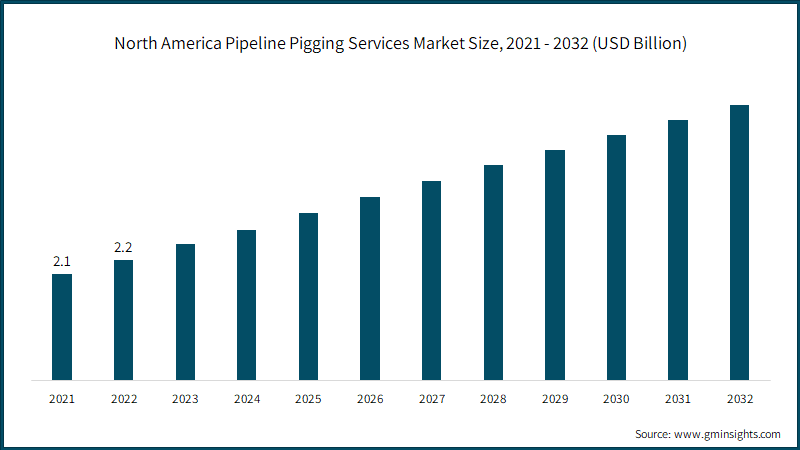Home > Energy & Power > Oil and Gas > Midstream > Pipeline Pigging Services Market
Pipeline Pigging Services Market Analysis
- Report ID: GMI4654
- Published Date: Jul 2023
- Report Format: PDF
Pipeline Pigging Services Market Analysis
The intelligent pipeline pigging services market is anticipated to expand at 1% growth rate during 2023 to 2032. Intelligent or smart pigging services involve the use of advanced equipment, such as sensors, to collect diverse data during pipeline inspections. These smart devices are attached to the pig, which moves through the pipeline, enabling the detection of corrosion and other abnormalities on the inner walls of the conduit system. This process not only facilitates the identification of potential issues but also includes advanced cleaning and maintenance operations based on data analysis. By leveraging the collected data, operators can make informed decisions regarding the integrity and ongoing maintenance of the pipeline.

The gas segment held a industry share of more than 84% in 2022 and is expected to grow at a lucrative pace by 2032. The increasing preference for natural gas as an alternative to conventional energy resources has led to significant investments in new gas transportation infrastructure. Several studies suggest that the world's oil reserves are depleting, making it imperative to shift applications reliant on oil to other energy sources. While renewable energy is gaining momentum, nuclear energy has also emerged as a prominent power generation option.
However, due to the high capital requirements and stringent policies associated with nuclear energy, widespread adoption on a large scale is challenging. Therefore, natural gas, which is readily available and requires minimal equipment modifications compared to other alternatives, has become the most immediate and feasible replacement for oil in various applications.

The North America pipeline pigging services market is poised to grow at a steady pace on account of the recent shale revolution which has led to the significant rise in construction of new oil & gas transportation network. The development of new supply systems will result in increased demand for inline inspection services, including pigging, to ensure optimal flow efficiency and minimize pipeline breakdowns. Regulatory authorities have also introduced policies aimed at reducing spillage and failures in pipelines, further driving the demand for these services.
For example, the U.S. Pipeline and Hazardous Materials Safety Administration (PHMSA) mandates the periodic inspection and cleaning of pipelines using pigging services. In the upcoming years, a supportive policy framework combined with technological advancements will open up new opportunities for pipeline pigging service providers, particularly in North America. These factors will contribute to the regional growth and progression.

